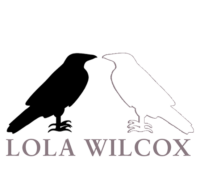Division 3 – Organization Development (OD) Consultants
Organization development consulting is the long-term, deliberate and planned change of an organization where the client is the total organization or a clearly bounded significant component, e.g. division, company, bureau, or school or subsystem of the organization. The purpose of the effort is system-wide improvement in the organization’s ability to carry out its mission and be most effective in a combination or all of the following competencies:
- Management of diverse human resources.
- Approaches to problem solving.
- Maintenance of congruence between the goals of individuals and those of the organization.
- Pro-active, responsiveness to its environment.
- Ability to gain and use input to decision-making by those affected by decisions.
- Use of organizational structures.
- Processes for policy development and role-negotiation.
- Systems for the resolution of conflict and distribution of power.
- Protection of human rights and maximization of human satisfaction.
- Normative changes.
- Product and service design and delivery processes.
- Utilization of technology.
- Relationship with suppliers, constituencies, including shareholders when appropriate, and community.
- Customer services.
- Contribution to its natural environment.
A change effort ordinarily involves an entry role negotiation phase, followed by an action research process of data gathering, analysis/synthesis phase from which collaborative decisions are made by client and consultant as to the focus of the effort (individual, intragroup, organizational or trans-organizational).
Based on the preceding diagnostic phase, planning, resourcing, implementing and evaluating multiple systemic actions and interventions are carried out and the impact assessed. The process then recycles as these new data are analyzed/synthesized. Finally, a plan exit or termination phase is carried out. The consultant works with members of the various organizations (clients) to carry out specific change efforts, utilizing and transferring to each client system the most appropriate available and pertinent knowledge, techniques and skills from the social sciences.
The emphasis here is on the organizational, social and technical processes and how they affect the accomplishment of the tasks and missions. The practitioner works with a complex set of interdependent sub-systems having an overall identity and relating as a whole to the outside world. This work is distinguished from the focus on the development of a team or group, which is more properly found in Division 2.
Broad Criteria for Work in this Division
These are expectations about what a new member should be working in or on – not, that a consultant would meet all of these criteria at the time of application. A consultant meets the requirements of this division when she or he has the following proficiencies:
-
- Performs all professional acts ethically and competently.
- Recognizes and appropriately designs and facilitates processes that accommodate the unique cultural, race, gender, age, sexuality and class differences represented in the organization and its constituencies.
- Uses a collaborative approach with clients. This means more than laying out a formula or series of solutions for the client. Rather the consultant works with the client organization/system to develop a climate where the members experience themselves as defining problems, developing solutions, setting goals, implementing them themselves, and giving and receiving feedback whenever possible.
- Develops a plan, and uses systemic interventions consistent with the plan.
- Competently designs and performs a collaborative methodology of evaluating outcomes.
- Gears interventions toward a total client system (a bounded organizational system). This criterion is utilized to discriminate the work of the OD consultant from, for example, the personal/professional development consultant working with an individual manager; or a group development consultant doing team development with a sub-component of an organization.
- Designs all steps in the change process to be congruent with the values and principles of the goals of the effort, and maximizes the self-responsibility, the self-management and the learning of the involved members of the client organization.

